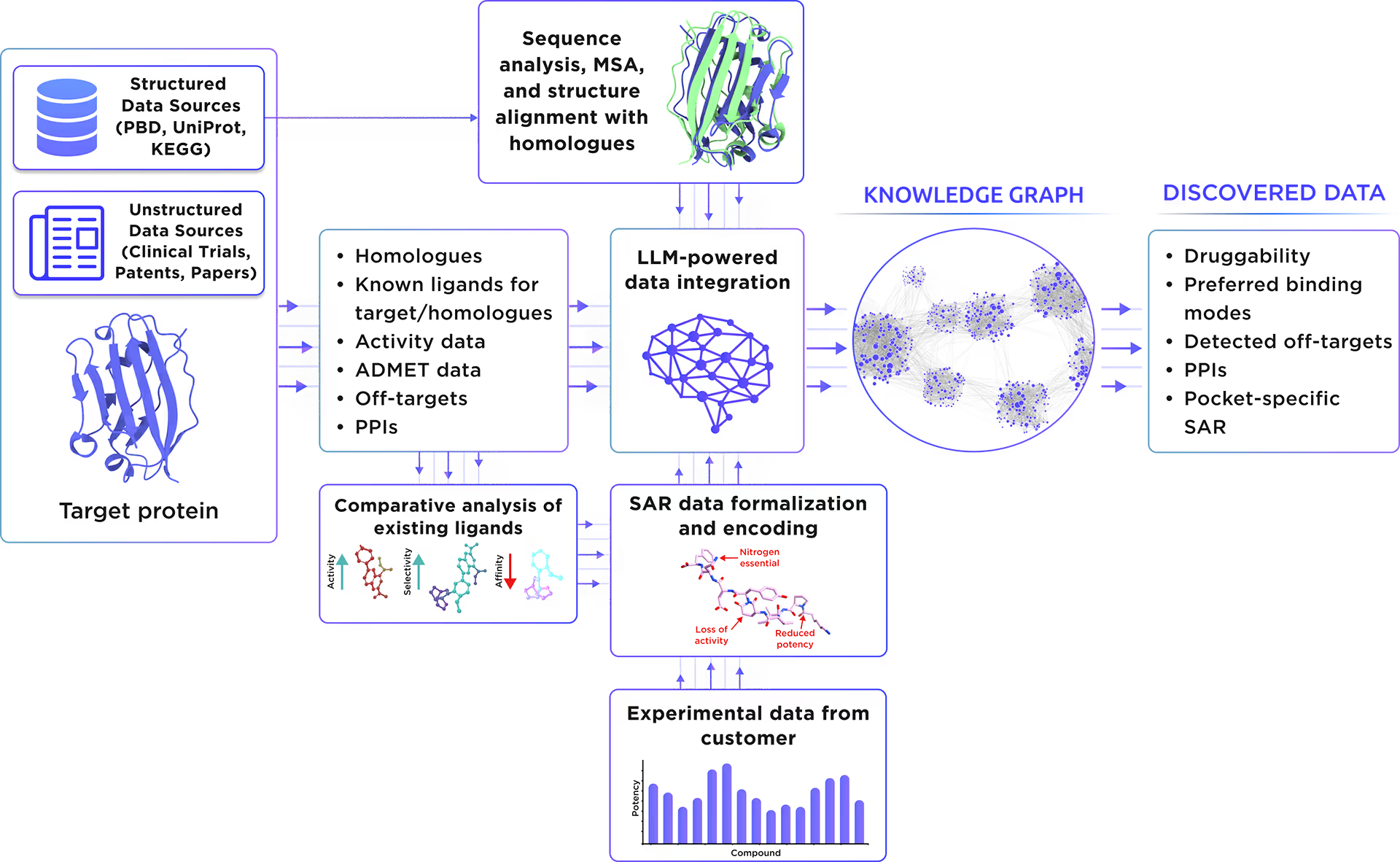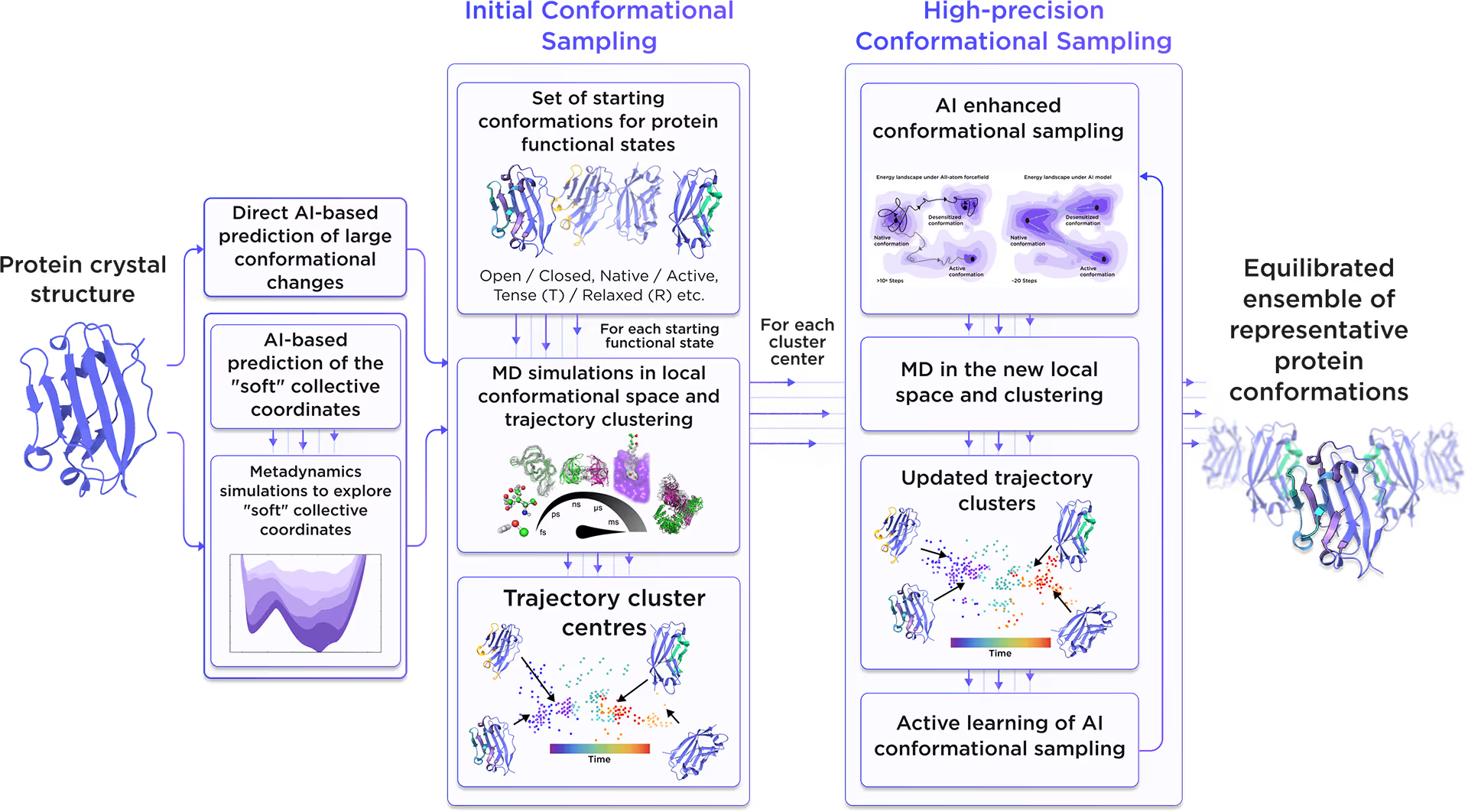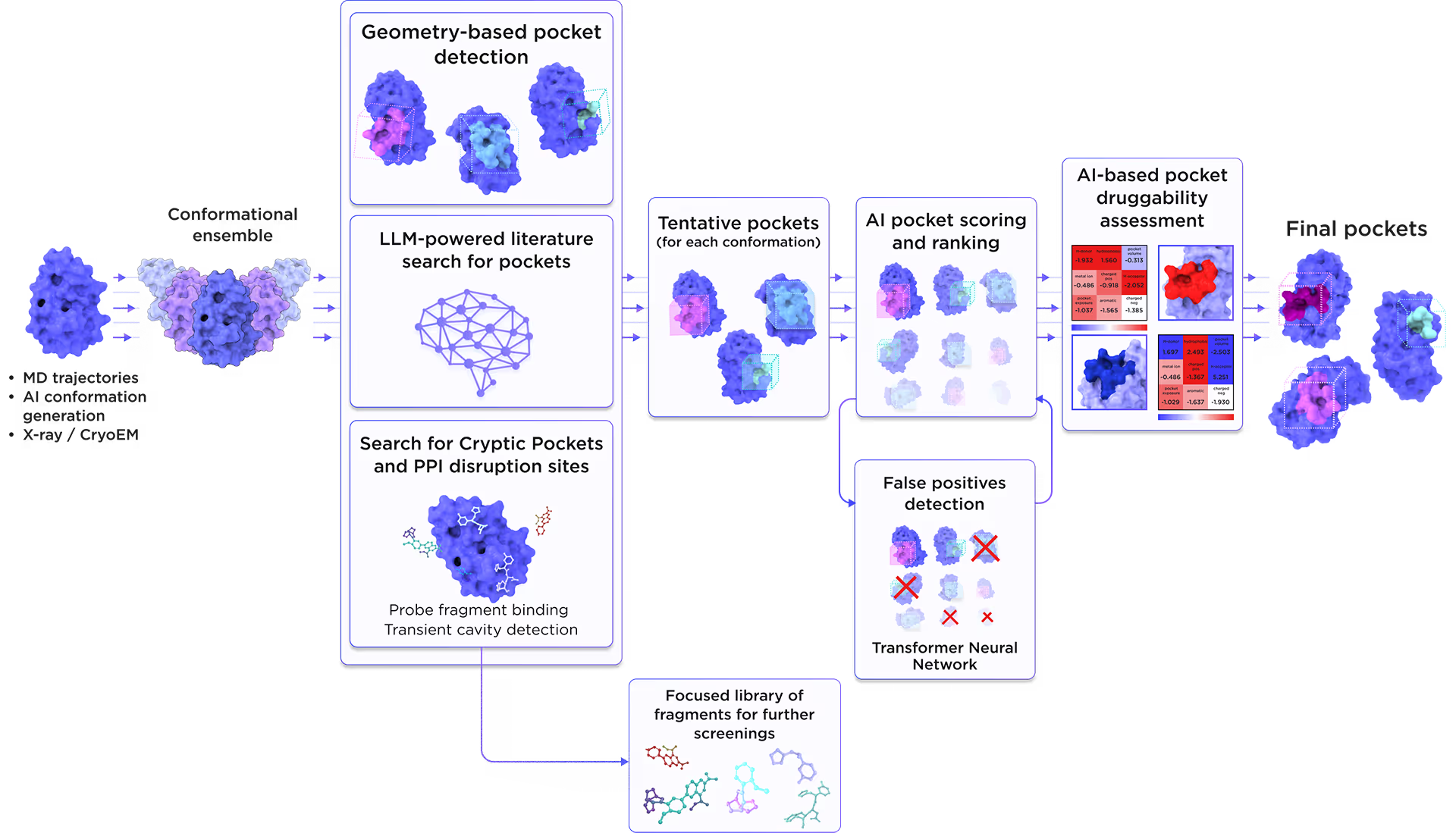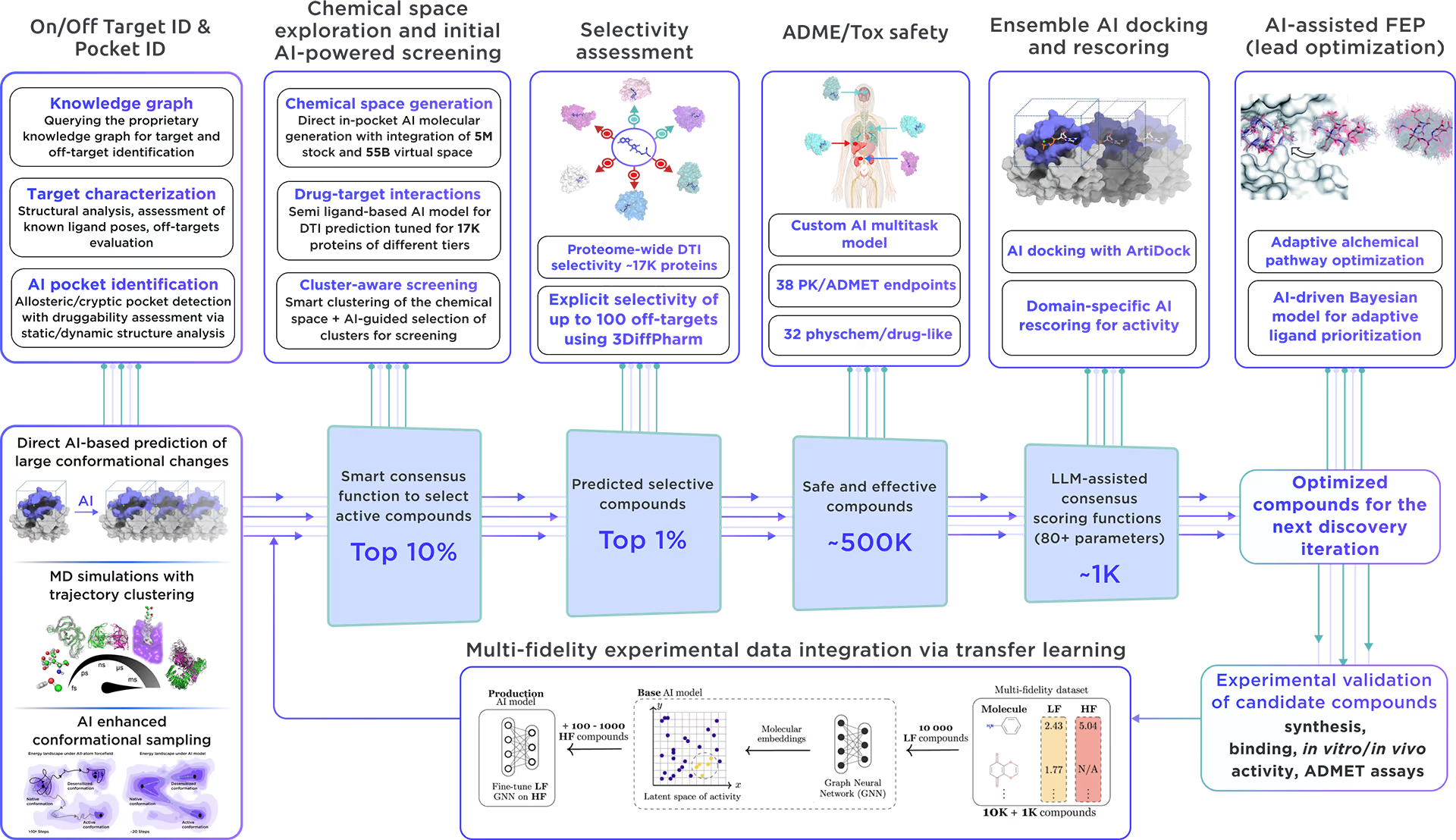

Available from Reaxense
This protein is integrated into the Receptor.AI ecosystem as a prospective target with high therapeutic potential. We performed a comprehensive characterization of [3-methyl-2-oxobutanoate dehydrogenase [lipoamide]] kinase, mitochondrial including:
1. LLM-powered literature research
Our custom-tailored LLM extracted and formalized all relevant information about the protein from a large set of structured and unstructured data sources and stored it in the form of a Knowledge Graph. This comprehensive analysis allowed us to gain insight into [3-methyl-2-oxobutanoate dehydrogenase [lipoamide]] kinase, mitochondrial therapeutic significance, existing small molecule ligands, relevant off-targets, and protein-protein interactions.

Fig. 1. Preliminary target research workflow
2. AI-Driven Conformational Ensemble Generation
Starting from the initial protein structure, we employed advanced AI algorithms to predict alternative functional states of [3-methyl-2-oxobutanoate dehydrogenase [lipoamide]] kinase, mitochondrial, including large-scale conformational changes along "soft" collective coordinates. Through molecular simulations with AI-enhanced sampling and trajectory clustering, we explored the broad conformational space of the protein and identified its representative structures. Utilizing diffusion-based AI models and active learning AutoML, we generated a statistically robust ensemble of equilibrium protein conformations that capture the receptor's full dynamic behavior, providing a robust foundation for accurate structure-based drug design.

Fig. 2. AI-powered molecular dynamics simulations workflow
3. Binding pockets identification and characterization
We employed the AI-based pocket prediction module to discover orthosteric, allosteric, hidden, and cryptic binding pockets on the protein’s surface. Our technique integrates the LLM-driven literature search and structure-aware ensemble-based pocket detection algorithm that utilizes previously established protein dynamics. Tentative pockets are then subject to AI scoring and ranking with simultaneous detection of false positives. In the final step, the AI model assesses the druggability of each pocket enabling a comprehensive selection of the most promising pockets for further targeting.

Fig. 3. AI-based binding pocket detection workflow
4. AI-Powered Virtual Screening
Our ecosystem is equipped to perform AI-driven virtual screening on [3-methyl-2-oxobutanoate dehydrogenase [lipoamide]] kinase, mitochondrial. With access to a vast chemical space and cutting-edge AI docking algorithms, we can rapidly and reliably predict the most promising, novel, diverse, potent, and safe small molecule ligands of [3-methyl-2-oxobutanoate dehydrogenase [lipoamide]] kinase, mitochondrial. This approach allows us to achieve an excellent hit rate and to identify compounds ready for advanced lead discovery and optimization.

Fig. 4. The screening workflow of Receptor.AI
Receptor.AI, in partnership with Reaxense, developed a next-generation technology for on-demand focused library design to enable extensive target exploration.
The focused library for [3-methyl-2-oxobutanoate dehydrogenase [lipoamide]] kinase, mitochondrial includes a list of the most effective modulators, each annotated with 38 ADME-Tox and 32 physicochemical and drug-likeness parameters. Furthermore, each compound is shown with its optimal docking poses, affinity scores, and activity scores, offering a detailed summary.
[3-methyl-2-oxobutanoate dehydrogenase [lipoamide]] kinase, mitochondrial
partner:
Reaxense
upacc:
O14874
UPID:
BCKD_HUMAN
Alternative names:
Branched-chain alpha-ketoacid dehydrogenase kinase
Alternative UPACC:
O14874; A8MY43; Q6FGL4; Q96G95; Q96IN5
Background:
The protein, identified by the accession number O14874, functions as a key regulatory enzyme in the metabolism of branched-chain amino acids (BCAAs) such as valine, leucine, and isoleucine. It catalyzes the phosphorylation and inactivation of the branched-chain alpha-ketoacid dehydrogenase complex, pivotal in the catabolic pathways of these amino acids. Known alternatively as Branched-chain alpha-ketoacid dehydrogenase kinase, its activity is crucial for maintaining amino acid balance within the body.
Therapeutic significance:
Branched-chain ketoacid dehydrogenase kinase deficiency, a metabolic disorder linked to this protein, manifests as autism, epilepsy, intellectual disability, and altered BCAA levels. Treatment strategies focusing on dietary BCAA supplementation have shown promise in normalizing plasma BCAA levels, highlighting the protein's potential in therapeutic interventions.